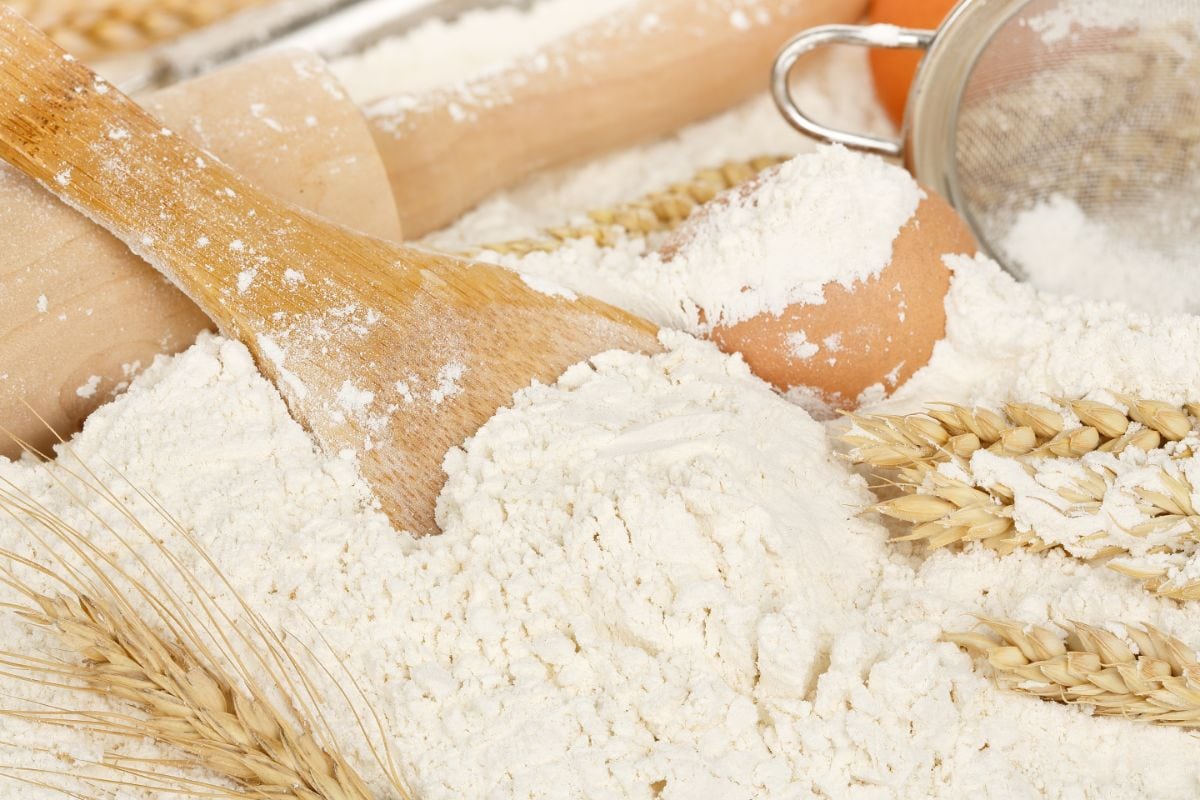Flour is a pantry staple and a vital part of anyone’s kitchen, used in a whole range of recipes both sweet and savory.
In particular, you need it for baking!
Flour is traditionally made from wheat, but these days you can also get a whole range of flours made from different grains, as well as variations like coconut flour, nut flour, self-rising flour, and more.
If you are a regular user of flour you might be wondering how you can tell if flour has gone bad.
After all, it’s one of those ingredients that many of us just leave in the cupboard, without much regard for the fact that it can go bad.
So does flour go bad? Well, I’m sorry to tell you, flour can go bad.
But how do you tell bad flour from flour that is good to use?
Luckily for you, we’re here to tell you how to spot when flour has gone bad.
The Four Signs Flour Has Gone Bad
The best way to tell if flour has gone bad is with your own senses.
Whilst using rancid flour won’t necessarily make you sick, it sure will make your baking taste worse, and that’s the last thing that you want!
Here are four tell-tale signs that you’re looking at spoiled flour rather than fresh flour.
Unappealing Odor
Using your nose is usually a great way to tell if food has gone bad, and the same thing is the case with flour.
Indeed, the biggest indicator of spoiled flour is a rancid smell.
If, for example, you notice that your flour smells musty, then it is likely your flour has gone bad.
Another indicator would be what you might call a ‘sour smell’, or a general staleness.
If you’re not sure how to classify the smell, ask yourself- does it smell like play-doh?
If it does, it is almost certain your flour has gone bad. If it has more of a ‘neutral odor’, it is a pretty safe bet your flour is fresh.
If you think you’re dealing with rancid flour but can’t tell by smell alone, you can also taste test flour.
Obviously, rancid flour will taste somewhat ‘off’.
Change In Color
Again, as with other foods, a good sign that flour is bad is its color.
Think back to what color your flour ought to be.
White flour, of course, is supposed to be a fluffy, pure white, whilst wheat flour and whole grain flours are more tan or light brown in complexion.
If you notice a change from the original color, your flour is probably no longer fresh.
Spoiled flour is likely to have green and yellow hues, which indicate the presence of mold. Nobody wants to eat moldy flour!
Texture
Another sense you can use to tell if flour has gone bad is touch. You don’t need to be a baking whizz to know that fresh new flour is supposed to be fine, and certainly not all clumped up.
Clumpy flour means that moisture got into the flour bag.
Too much moisture makes the flour a breeding ground for bacteria and, as a consequence, makes the flour go bad.
Bugs
It should go without saying really, but bugs in your bag of flour means your once fresh flour is now expired flour.
One bug that commonly makes its home in unguarded flour are flour beetles, a hardy species of insect that is one of the biggest agricultural pests on the planet.

How To Store Flour Correctly
Here are a few tips on how to store your flour properly, to avoid it going bad.
Don’t worry, it’s perfectly fine to store your floor in the pantry and at room temperature.
However, rather than leaving it in an opened bag, there are a couple of options.
Use A Container
The best way to extend the shelf life of flour is to store it in an airtight container.
By putting your flour in an airtight container, you can be confident that no bugs, moisture, or any other unpleasantness will creep into your flour.
It does not matter what kind of container you use: a glass container, plastic container, a metal container.
As long as your container is a sealed container, your flour will stay fresh and have a longer shelf life.
Use A Bag
You can also transfer your flour across from the bag of flour to a plastic bag to extend its shelf life.
What the flour is stored in isn’t all that important, as long as it is tightly sealed.
A great option would be to use vacuum sealed bags, as you can be completely sure your flour will stay fresh.
Store It In The Fridge
Other than storing flour at room temperature, you can also store flour in the fridge or freezer.
Just make sure you keep it in a freezer bag or some kind of airtight container!
What is the Typical Shelf Life Of Flour?
White Flours And Processed flours
Different types of flour have a different typical shelf life. Highly processed all purpose flour has the longest shelf life.
All purpose flour has had parts of the wheat grain removed, meaning fewer aspects of the flour to go bad.
All purpose flour has a shelf life of about a year in the pantry and 2 years in the fridge. White flour falls under this bracket.
Whole Wheat Flour And Other Flours
Whole wheat flour and other whole grain flours have a much shorter shelf life.
This shorter shelf life is a result of having more components to go bad, including fats and oils- and you don’t want to eat bad oil.
The shelf of whole wheat flour is generally up to three months.
Alternative flours also have a shorter shelf life, for the same reasons as whole wheat flour.
Again, most flours of this type, like oat flour, coconut flour, and other nut flours, will also last for up to three months in the pantry before you start to notice the tell-tale musty smell of old flour that has gone bad.
What About The Expiration date?
Of course, one easy way to check if your flour is still fresh is to check the expiration date printed on the bag.
Most packaged flours will have an expiration date right there on the bag to give you an idea if your flour is bad.
In many cases, it will be an expiration date, but sometimes you will notice a best by date.
Whether an expiration date or a best by, it will be based on storing the flour in a cool, dry place.
This doesn’t need to be a fridge, it can be stored in the pantry at room temperature so long as it is kept out of direct sunlight.
Final Thoughts
Keeping your flour fresh is important, especially for the quality of your baked goods. It’s also important to remember, though, that eating expired flour won’t make you sick.
Eating expired flour frequently isn’t a great idea if you can avoid it, so do just that. Hopefully, this article has helped!










